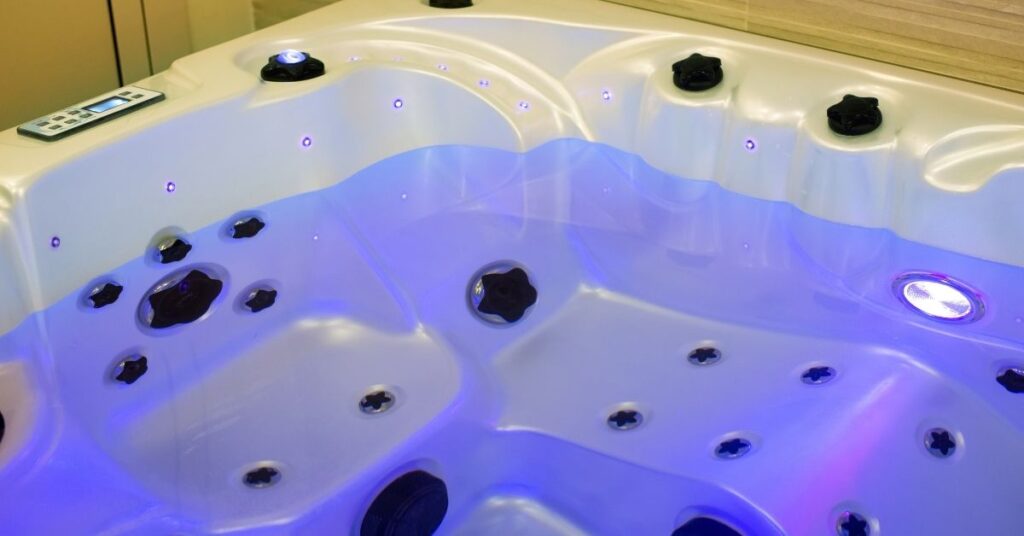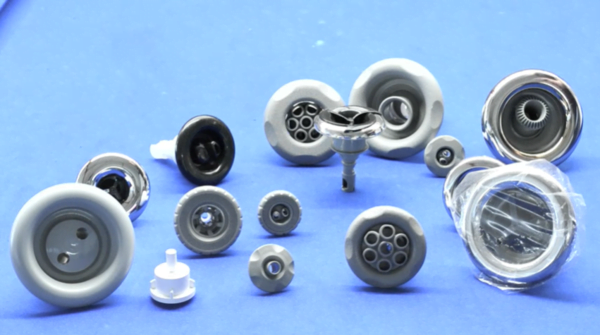Have you ever wondered how to spot a leak in a hot tub? Or maybe you want to know how to stop water from leaking in the first place? If you've been wondering about these questions, you'll want to read this post.
Your hot tub started leaking, and you didn't know what to do. Could it be the jets or pumps? Or maybe it's the heating element? You could have taken it apart, but it would be a tough job, especially if you don't know what you're doing. At the same time, you also didn't want to pay someone else to do the job for you. So you decided to try to repair it yourself.
But hold on a second. You might be looking at the wrong places, or you might start ripping your hot tub apart but still couldn't find the leak. So first, let's see where hot tub leaks usually occur.
How to Detect a Hot Tub Leak
Let's start with the easy ones. One common method is to add food dye or other coloring to the water. The leak location is most likely where the spot shows up first.
Another way to know where the leak is coming from is to let the water sit for some time and see where the water level stopped dropping. Look around the water level. If it touches the lights, waterfall, or jets, you might have already found the source of the leak.


These two methods will work most of the time. Sometimes it will be more subtle, so you will need some investigating to determine the location and cause if this is the case.
What are the most common leak sources?
Some areas are more prone to leak than others. These include pumps, jets, and valves. Start with these and work your way to other parts if you haven't found the source of the leak.


Pumps
Look for water under the pumps and rust around the seals and motor. This indicates a leaking seal. If there's a problem with the pump seal, you may need to change the entire pump or motor to fix this issue. Note: it's possible to change the pump seal, but it would be more involved, and you might end up ruining the pump if you don't know what you're doing.
Heater
Heaters leak from the heating system's union connections, heat sensor, or thermostat pressure switch. Rust on the heater tube is a sign of a heater leak. Replace the heater if it has corrosion or pitting. Those parts will develop into leaks in the future.
PVC Connections & Unions
Over time unions loosen due to changes in temperature and vibration. Note: Most unions are made of plastic, so avoid using a wrench and just remove them by hand. If they keep leaking, you might need to change the gasket, O-Ring, or the union assembly.
Valves
Shut-off valves, diverter valves, and air control valves are the three types of valves used in the hot tub. Shut-off and diverter valves are more prone to leak than air control valves because they control water flow and not air. You can replace leaking shut-off valves with new ones by cutting them out and gluing them in. To keep your valves from leaking, you must regularly maintain the O-rings and move parts clean and lubricated.
Jets & Manifolds


A jet gasket is a rubber seal that surrounds a jet fitting. It keeps water from leaking out of the jets and prevents pressure from building up inside the jet. They, too, become loose or crack over time. Fixing it involves removing the jet from the spa and using a silicone sealant on both sides of the new gasket before tightening the jet to create a better seal.
Shell Cracks
The acrylic layer covering the spa shell's front can crack or split. However, most cracks are only cosmetic, and they don't usually cause leaks. Drill a small hole on both sides and thoroughly clean the crack to stop cracks from spreading. Apply either a Spa Bond patch or, for larger cracks, Plast-Aid.
Frequently Asked Questions (FAQ)
Your questions answered.
I just bought my hot tub, but it has already started leaking. What can be the cause?
There are several ways leaks happen. If a tub is new and has no leaks in the first year, it's likely a manufacturer defect. The most common cause of a leak in a tub that's been used for a couple of years is a bad pump or heater.
When should I call a professional for help?
The most common issues are mechanical failures or poor maintenance that causes leaks. These leaks are usually easy to identify by a simple visual inspection of the hot tub. However, if there are no obvious signs of leaks, it is important to call a professional hot tub technician to examine your hot tub for leaks. You can spot a leak by watching water dripping out of the hot tub or pool.
What are the different types of leaks?
There are different types of leaks, and the type that results in a significant loss of hot water is the one that's often not noticeable until it's too late. Leaks can happen in various areas within your hot tub, including jets, spas, faucets, and even the pump. This leak typically causes a low-pressure reading, a leaky tub floor, and poor circulation.
Should I use Fix-A-Leak (fix in a bottle) on all leaks?
Yes and No. You should probably fix it if you think you have a leaking valve/leak in your hot tub. However, if you believe that the pump and plumbing components are the sources of the leak, you probably shouldn't. This is because warranties cover most pumps and plumbing, so they don't want you to use their equipment to fix something covered under those warranties.
Conclusion
Hot tub leaks happen, but most are relatively easy to fix if you know where to find them. It's a good practice to check your hot tub for leaks every once in a while. Many hot tub manufacturers recommend a simple hot tub leak repair kit for DIY-ers who want to save money and time. If all else fails, check with your nearest plumber or hot tub expert to get your hot tub fixed.
